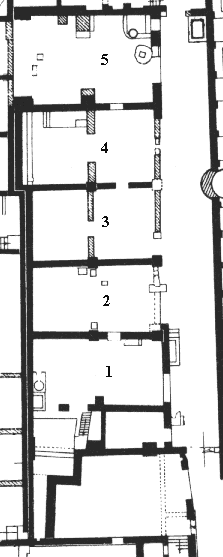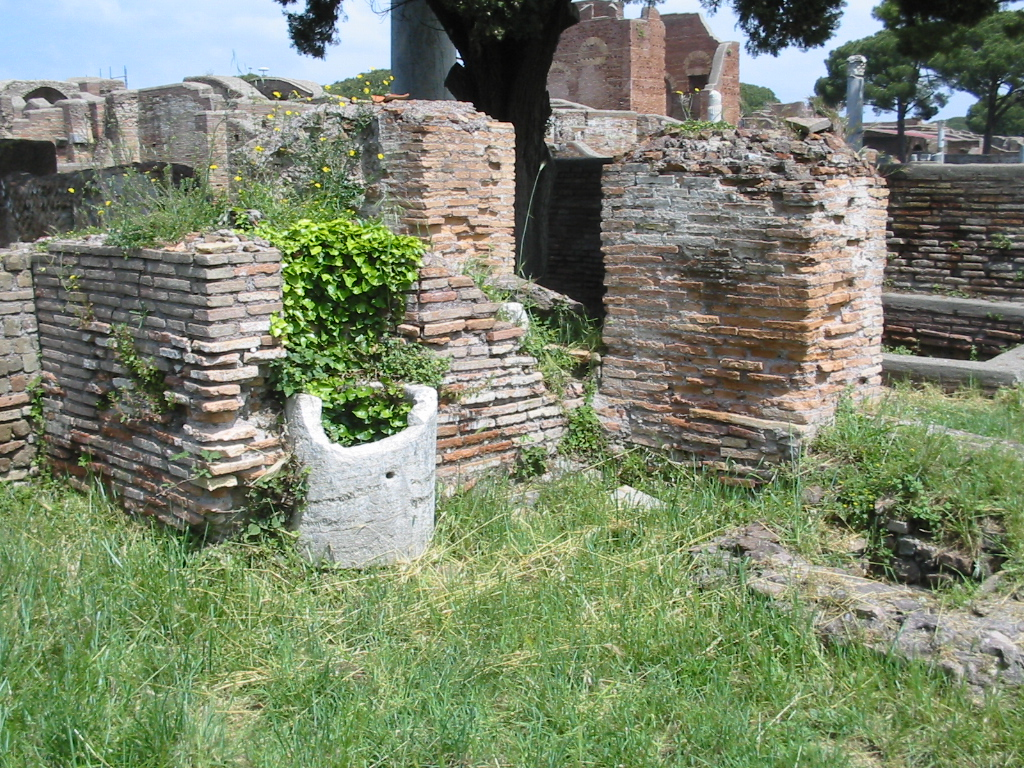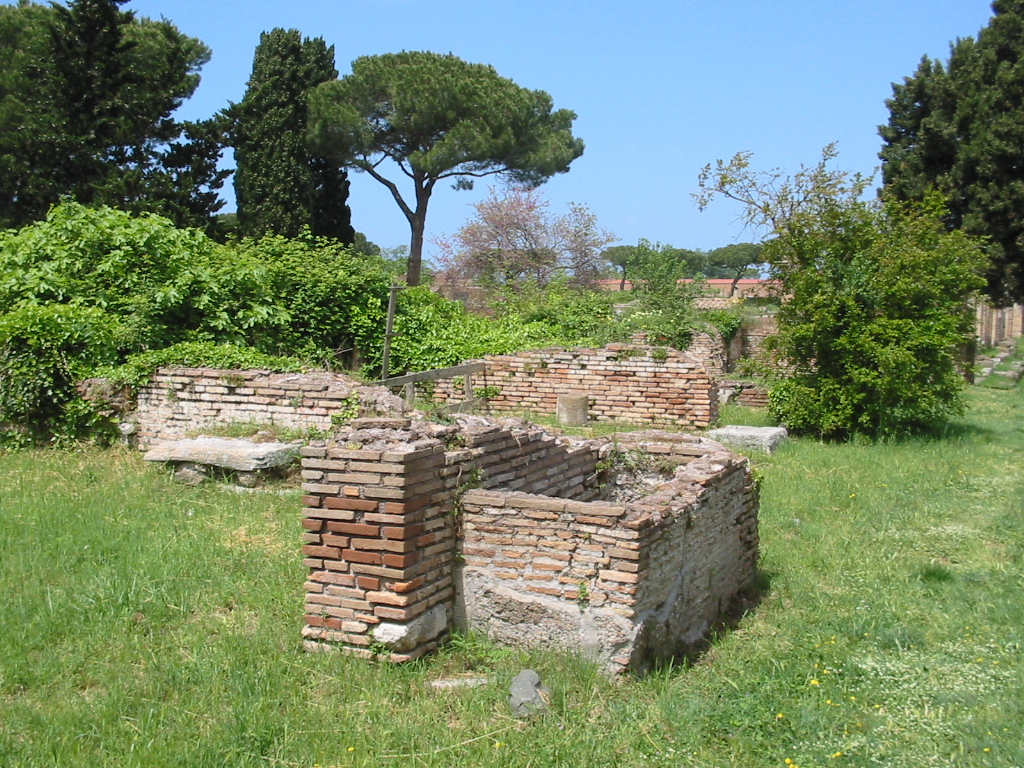|
The east part of block I,X is occupied by a workshop where stuppa, i.e. tow or oakum was produced from flax. The workshop was installed in shops that had been built during the reign of Trajan (98 - 117 AD; opus latericium). To the south of the workshop are the guild premises of the corpus stuppatorum (Guild Temple I,X,4). The workshop and the guild seat were built at the same time, during the reign of Alexander Severus (222 - 235 AD; opus latericium). They have a common wall, which suggests that the buildings were both owned by the guild. Several later alterations can be seen (opus latericium; opus vittatum). The workshop was analysed extensively by Hermansen, whose work will be summarized here. Stuppa, Hermansen explains, was used for many purposes: lamp-wicks, torches, ropes, and the caulking of ships. The latter function of stuppa is indicated by the presence of the stuppatores on the Square of the Corporations (II,VII,4), where they are joined by men from other local trades, all related to shipping. Among these were the restiones, producing rope. The stuppatores and restiones shared an office (statio) there. As we will see, the workshop was well-suited for the processing of flax. The flax was dried in the field. When it was processed further in workshops, it was immersed in warm water - so we expect to find basins and a heating installation. Next, the flax was dried and pounded with mallets, for which tables or blocks should be present. Finally it was raked with a metal comb, which is depicted on the mosaic of statio 58 on the Square of the Corporations. The alley to the east of the workshop (Vico del Pino) was blocked at the north and south end by a door, indicating that it was private property. It may have been a ropewalk used by restiones. In the alley are three basins. Room 5 is divided in two by huge piers. In the north-east corner of the east half are the remains of a staircase, accessible from the alley. In the south-west part of the substructure of the staircase is a recess containing a travertine basin with a hole in the side. A bit to the south-east is a well. Rooms 3 and 4 are divided in two by north-south running walls with doorways. A large basin was set against the north wall of the west half of room 4. The west wall of the basin is very wide and has a stone top. It was probably used as a table for pounding the flax. On the floor of room 2 are three pounding blocks. In the south-west part of room 1 is a big basin, originally part of second century baths that once occupied the southern part of the block. Behind the basin, in a long and narrow room in the south-west corner of the building was a water-wheel. The basin was reached from the workshop along a staircase with eight steps. To the north, set against the west wall, are a small basin and a stand for a cauldron. Boiling water from the cauldron could be taken to the various basins. A stone table was set against the north wall. In the centre of the room is a large block. It is surprising, to say the least, that this modest workshop is next to the - more or less contemporaneous - Tempio Rotondo (I,XI,1), and so close to one of Ostia's major crossroads. It has been suggested that many ropes were used in cranes for the building of, for example, the Round Temple to the east. That does not explain however why the rooms were not used for a different purpose later on. The primary business of the members of the guild must have been the production of ropes and wicks, and cooperation with the fabri navales, the ship-carpenters who built and repaired ships. |
 Plan of the workshop. After SO I. |

